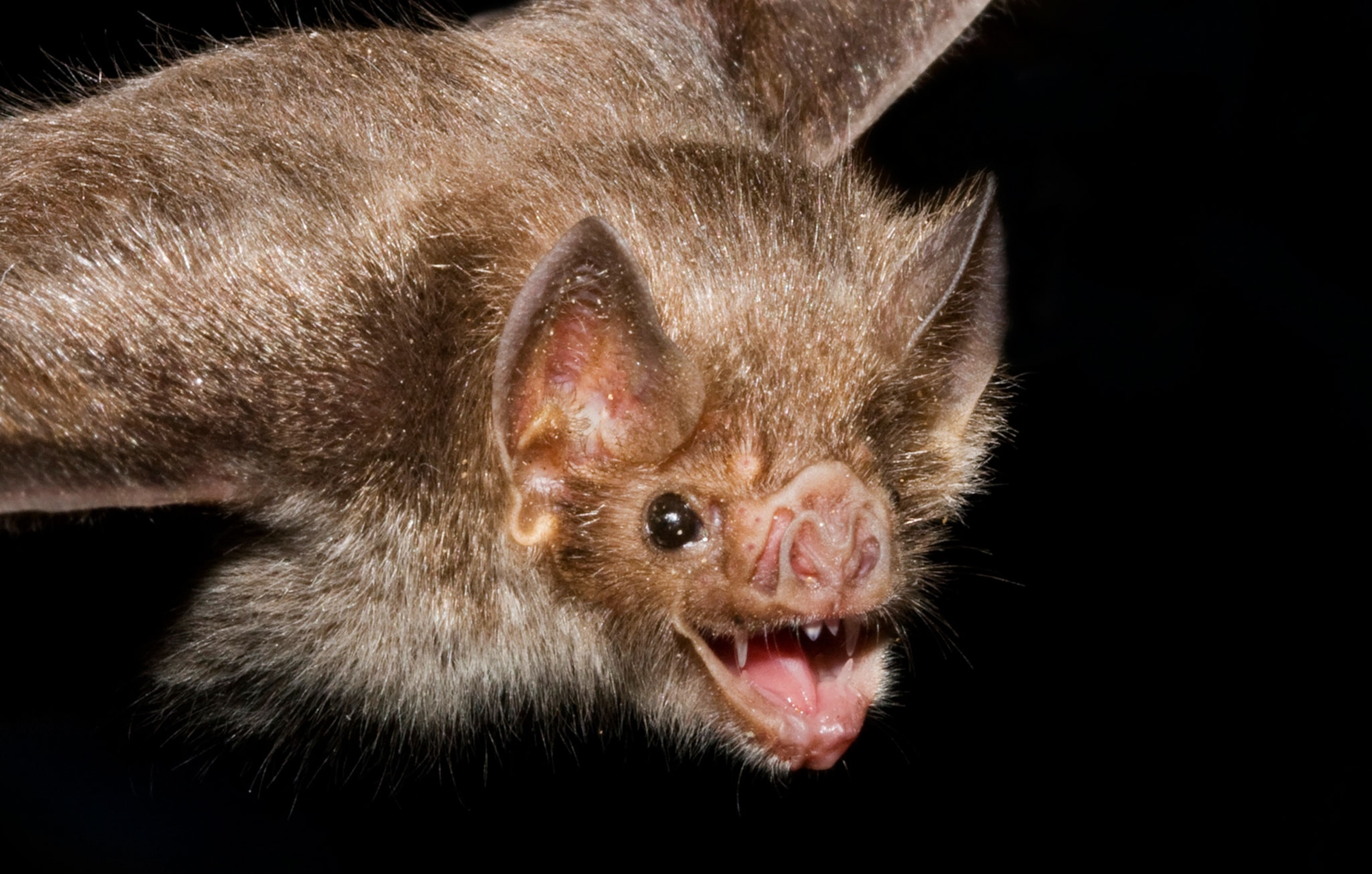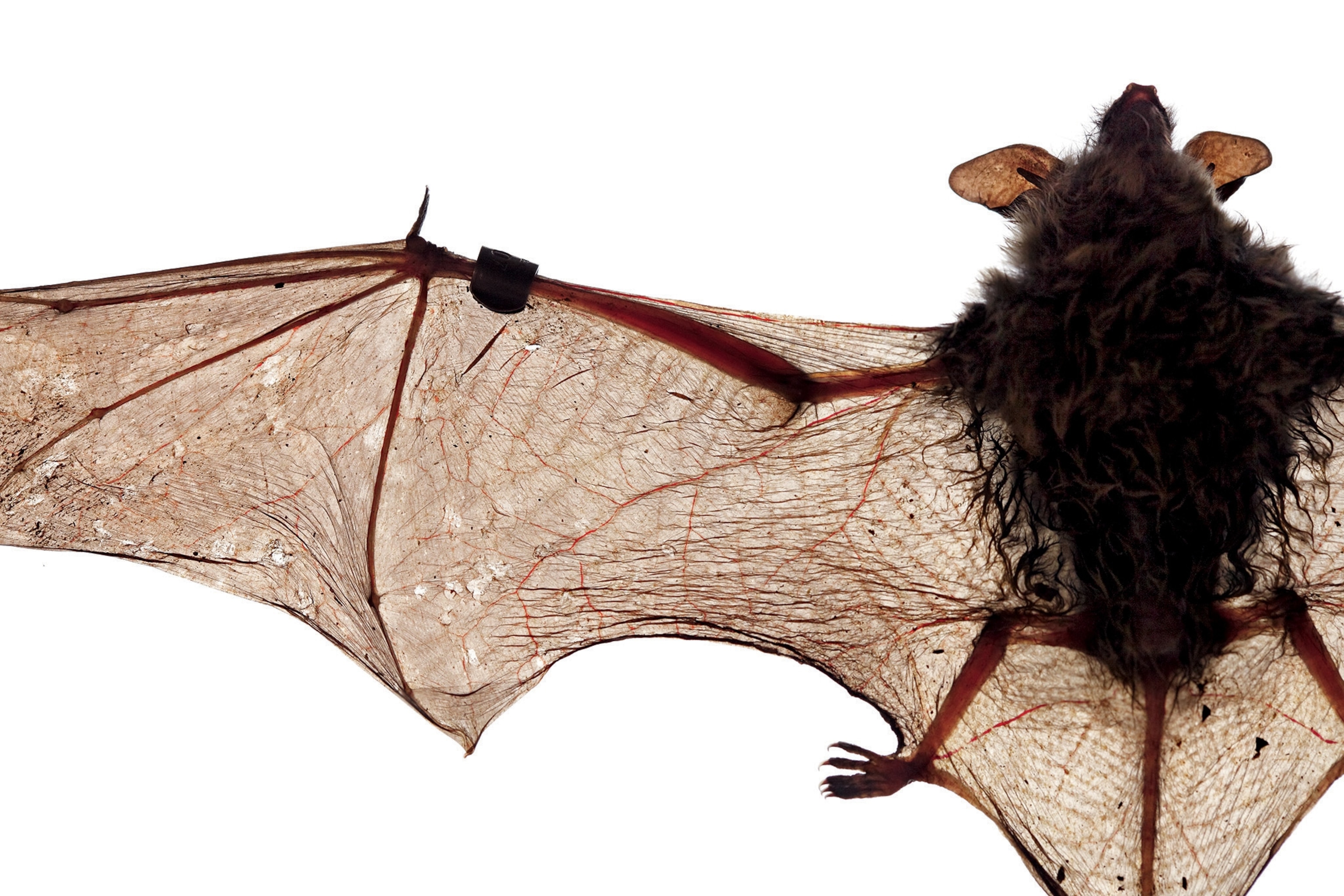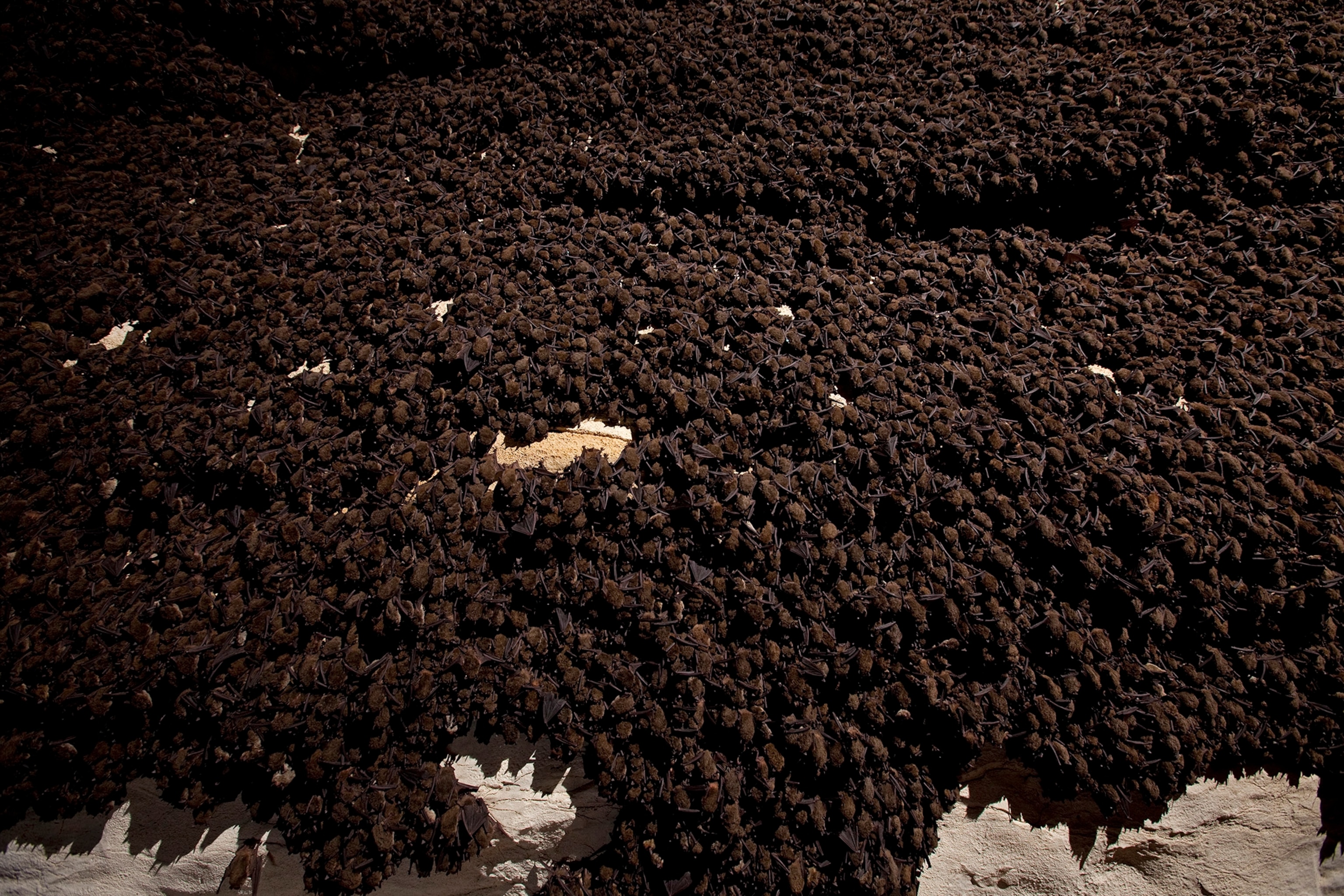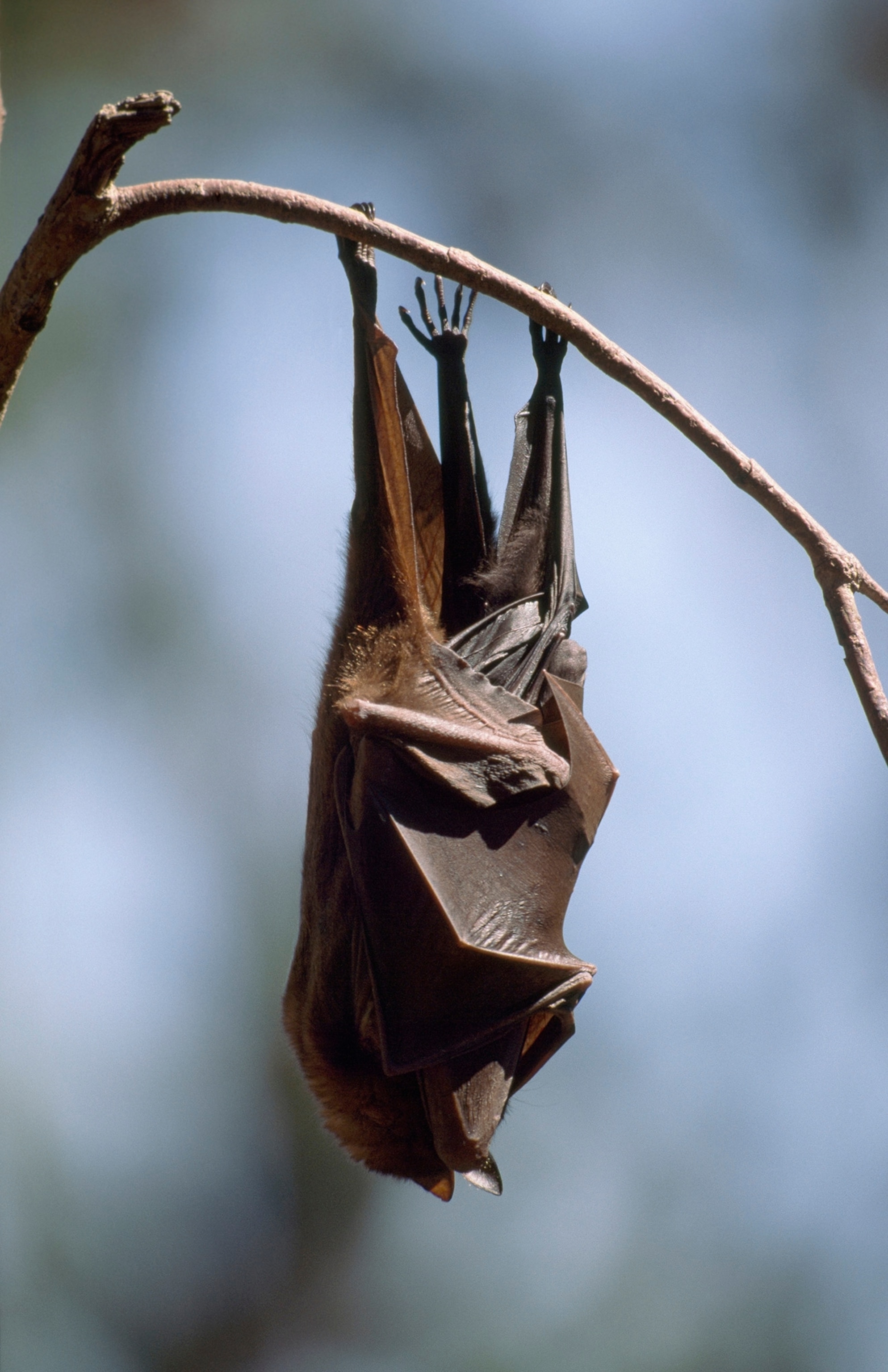
Why Female Vampire Bats Donate Blood to Friends
Bats use a complex social calculus when they share regurgitated meals, a new study suggests.
Female vampire bats donate blood to friends to ensure their survival down the road—suggesting the animals' social lives are much more sophisticated than we thought, a new study says.
The findings shed further light on the often maligned species, which is native to the American tropics. Vampire bats eat only blood—taking small amounts without harming their hosts—and have amassed remarkable biological hardware to do so. They can sense body heat like a pit viper, run and jump surprisingly well, and urinate half of their blood meals’ water content within 30 minutes of eating.
They also live in tightly knit communities in which multiple unrelated females regularly band together, perhaps providing their pups—and each other—with body warmth and protection from predation. Vampire bats care for their their young for nine months—a long time relative to other bats, which usually become independent in about a month. (See "The Vampires That Feed on Vampires.")
It doesn't end there. Female vampire bats also help out their friends by sharing regurgitated blood with bats unlucky enough to score a meal. Consider it an on-the-fly insurance policy: If a vampire bat misses two nightly meals in a row, it will starve.
A classic example of what's called reciprocal altruism—helping another so they'll help you—this phenomenon has impressed scientists ever since University of Maryland biologist Gerald Wilkinson first reported it in the 1980s.
But Wilkinson didn’t have today’s monitoring technology at his disposal. So several years ago, Wilkinson’s then-student Gerald Carter, now a researcher at the Smithsonian Tropical Research Institute in Panama, decided to up the ante.
Vomit Snacks
Carter worked with zoos to establish a captive population of several dozen related and unrelated common vampire bats (Desmodus rotundus) at the Organization for Bat Conservation in Michigan. He then observed them for three years, crouching in the bottom of their enclosure with a camcorder sensitive to infrared light.
During that time, Carter recorded which bats tended to share their meals with others.
To artificially invoke the bats’ generosity, Carter forced individual bats to fast for 24 hours. He then reintroduced those bats—both males and females—to the group, keeping track of which bats offered vomit snacks to their hungry comrades. (See "Vampire Bats Have Vein Sensors.")
When he repeated this trial hundreds of times, Carter noticed that when a fasting female bat had previously shared her food with other females, she received more total sustenance than a selfish one. And some bats refused to help empty-bellied donors who had previously rebuffed them, in line with Wilkinson’s earlier “tit-for-tat” analysis.
16 of Our Favorite Bat Pictures
But Carter also noticed that for many bats, getting denied a snack by an empty-bellied but otherwise willing donor didn’t doom the relationship.
In fact, the donors who previously couldn’t give to their hungry neighbors gave even more once they had a meal to share, “just like how you might be especially generous to a friend if you were unable to help them for a long time,” says Carter.
The find suggests that female vampire bats constantly keep track of whom they can turn to in a time of need—and actively work to repair relationships that have gone off-track.
“Sharing meals is not just a one-off,” says Wilkinson, who was a co-author on the new study, published November 18 in Proceedings of the Royal Society B. “They integrate [social interactions] over a long period of time.”
"Elephant in a Bat Package"
“I’m just delighted,” says Brock Fenton, a biologist at the University of Western Ontario who wasn’t involved in the study. Its detailed approach “finally gives us some indication of how the food sharing might have evolved” as an insurance against unsuccessful hunts.
Between their deep social cooperation and parenting skills, “you’re almost looking at an elephant in a bat package,” adds Fenton.
Researchers still have more work to do, including figuring out how mother bats teach proper vomit-sharing etiquette to their young. (See "6 Bat Myths Busted: Are They Really Blind?")
But in the interim, vampire bats teach a valuable, if bloody, lesson.
“Vampire bats are really great sharers,” says Winifred Frick, an ecologist at the University of California, Santa Cruz, who wasn't part of the study.
“We could all take a leaf out their book.”
Follow Michael Greshko on Twitter.





















